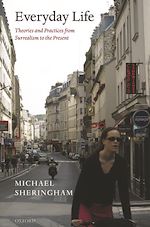
In the last twenty years the concept of the quotidien, or the everyday, has been prominent in contemporary French culture and in British and American cultural studies. This book provides the first comprehensive analytical survey of the whole field of approaches to the everyday. It offers, firstly, a historical perspective, demonstrating the importance of mainstream and dissident Surrealism; the indispensable contribution, over a 20-year period (1960-80), of four major figures: Henri Lefebvre, Roland Barthes, Michel de Certeau, and Georges Perec; and the recent proliferation of works that investigate everyday experience. Secondly, it establishes the framework of philosophical ideas on which discourses on the everyday depend, but which they characteristically subvert. Thirdly, it comprises searching analyses of works in a variety of genres, including fiction, the essay, poetry, theatre, film, photography, and the visual arts, consistently stressing how explorations of the everyday tend to question and combine genres in richly creative ways.
By demonstrating the enduring contribution of Perec and others, and exploring the Surrealist inheritance, the book proposes a genealogy for the remarkable upsurge of interest in the everyday since the 1980s. A second main objective is to raise questions about the dimension of experience addressed by artists and thinkers when they invoke the quotidien or related concepts. Does the 'everyday' refer to an objective content defined by particular activities, or is it best thought of in terms of rhythm, repetition, festivity, ordinariness, the generic, the obvious, the given? Are there events or acts that are uniquely 'everyday', or is the quotidien a way of thinking about events and acts in the 'here and now' as opposed to the longer term? What techniques or genres are best suited to conveying the nature of everyday life? The book explores these questions in a comparative spirit, drawing new parallels between the work of numerous writers and artists, including André Breton, Raymond Queneau, Walter Benjamin, Michel Leiris, Maurice Blanchot, Michel Foucault, Stanley Cavell, Annie Ernaux, Jacques Réda, and Sophie Calle.